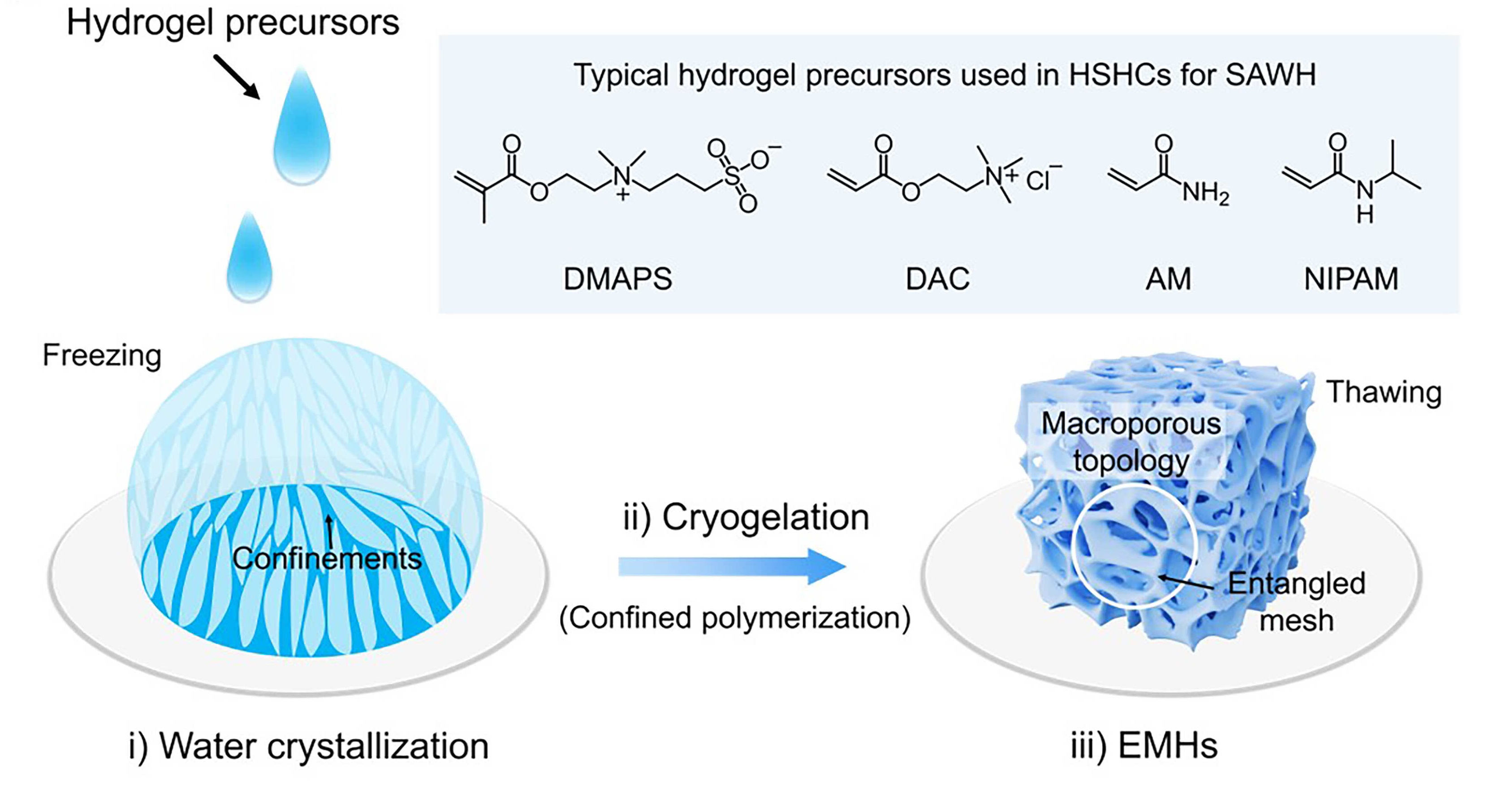According to a study published in Advanced Materials, researchers led by Prof. CHEN Tao at the Ningbo Institute of Materials Technology and Engineering (NIMTE) of the Chinese Academy of Sciences (CAS), in collaboration with researchers at the Max Planck Institute of Microstructure Physics, has developed entangled mesh hydrogels (EMHs) via cryogelation, achieving rapid atmospheric water harvesting.
Freshwater scarcity has severely impacted the economic development and human quality of life. Sorption-based atmospheric water harvesting is a promising solution to alleviate freshwater scarcity. Hygroscopic salt-hydrogel composites (HSHCs) are representative and ideal sorbents. However, the sluggish sorption/desorption kinetics has limited the performance enhancement and further applications of sorption-based atmospheric water harvesting.
To address this issue, the researchers used a cryogelation method to engineer a stable macroporous topology within EMHs. Compared with conventional hydrogels for HSHCs, the obtained EMHs have superior mass transport performance.
They embedded hygroscopic LiCl and photothermal graphene oxide flakes into the EMHs, achieving high-performance hygroscopic EMHs with both remarkably enhanced moisture sorption and solar-driven water desorption kinetics.
In addition, a rapid-cycling harvester prototype based on the obtained HEMHs was developed for practical solar-driven sorption-based atmospheric water harvesting. Under natural solar illumination, the harvester records a freshwater yield of 2.85 Lwater kgsorbents-1 day-1 through continuous eight sorption/desorption cycles, outperforming the reported hydrogel-based sorbents.
This strategy based on engineering polymer networks also shows excellent generality as it can be extended to other hydrogels used in HSHCs.
The generic network engineering approach to improve mass transport properties shows great application potential in batteries, catalysis, biomedicine, and other emerging fields.
This work was supported by the Natural Science Foundation of China, the Ningbo Science and Technology Bureau, the International Cooperation Project of Ningbo City, and the Sino-German Mobility Program, etc.







